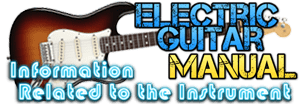LEARN about the most commonly used effects pedals for ACOUSTIC Guitar: Equalizer, Compressor, Chorus, Reveb, Delay…
Acoustic guitar players don’t usually have to carry around a huge array of effects to achieve the sound they need. In fact, a dedicated acoustic guitar amplifier is often enough.
Nowadays, acoustic amplifiers have some built-in digital effects such as Chorus, Reverb or Delay. They also usually have a microphone input and a balanced low-impedance output. If you want to know more about this type of devices, you can visit the “Acoustic Amplifiers” page.
Direct Injection DI Box
If we are going to connect our acoustic instrument directly to a mixing console or an interface, we will need a direct injection box. Also known as a simply referred to as a DI box.
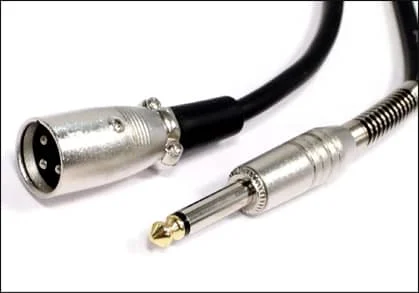
This type of pedal converts the high impedance signal from our acoustic guitar into a low impedance signal or mic level signal. This way we can connect our acoustic instrument directly through the microphone inputs of the interface or external sound card.
Converting the signal from high to low impedance is essential when it comes to transporting our signal optimally, without the annoying problems of noise or interference caused by a high impedance signal.
We can get a passive injection box (without the need for a power supply) for about $15, such as the simple Millenium DI-E to convert the signal from our guitar jack connector into an XLR output.

The tc electronic Teleport GLT is an active injection box (requires power supply) for about $25. This device is specially designed for long cable runs of up to 100 meters.
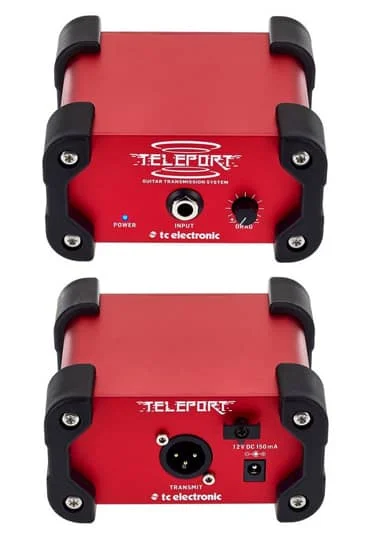
The Millenium DI-33 is also an active DI box that works with a battery or phantom power, and costs around $30.
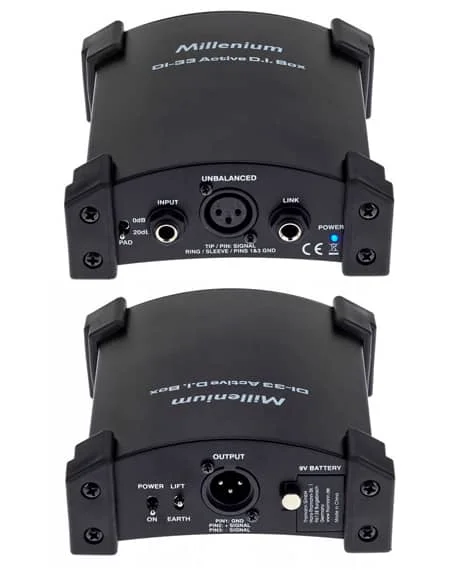
Phantom Power
I’ll quickly explain what phantom power is. If we have, for example, a sound card with a 48 volt phantom power option for condenser microphones, we can also power our active direct box.
As mentioned, it is also very common to find DI outputs, to connect our acoustic amplifier via an XLR plug, to another audio device.
Acoustic Guitar Pedals: Preamps
Other devices, such as some acoustic guitar preamp pedals, integrate an DI box, sound effects and equalization controls. Something that makes things easier for us as it is all in one package.
Harley Benton Custom Line Acoustic
For example, the Harley Benton Custom Line Acoustic preamp integrates Reverb and Chorus effects, EQ controls, DI output and headphone connection.
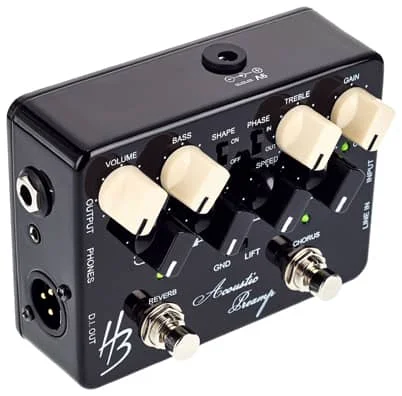
In addition, this pedal has a very affordable price of about 90 dollars.
Nux Stageman Floor Preamp
The Nux Stageman Floor Preamp is besides a injection box, with reverb and chorus effects, and looper recording of up to 60 seconds.
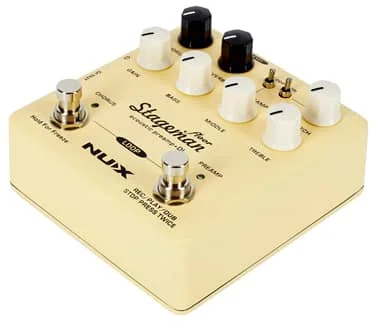
It also has a headphone output and a Micro USB input for firmware updates, for around 140 dollars.
Multi-Effects Pedals for Acoustic Instruments
Zoom A1 Four Acoustic FX
As for multi-effect pedals for acoustic instruments, Zoom offers the A1 Four Acoustic FX Pedal for around 130 dollars. This multi-effects pedal has 50 storage slots, 80 different effects and a 30-second Looper recording option. It also has 68 rhythm patterns that can be used in combination with the Looper.

In terms of effects, up to 5 effects can be combined together and in the preferred configuration order. In addition, it has an integrated tuner, USB port, headphone connection, and mics can be connected with the included adapter.
LD Systems FX 300
Another option may be the LD Systems FX 300 multi-effects with 2 channels and 16 effects, for a price of around $150.
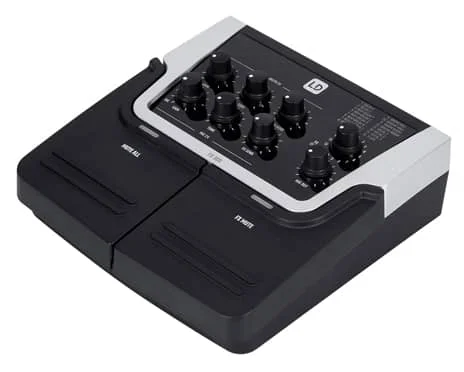
This device has an input for dynamic and condenser mics, and a balanced, low-impedance, and unbalanced output.
Elite Acoustics Stompmix X4
If we want to go a step further in terms of this type of device, we can opt for the Elite Acoustics Stompmix X4 Pedal Mixer for around $330. This multi-effects device has a noise gate, compressor, equalizer, and reverb and delay effects.

With 10 storable mixes, combined microphone and line inputs, 48 volt phantom power, and USB port.
Acoustic Guitar Pedals: Most Used Effects
If we prefer the pedals separately, we can use our electric guitar pedals such as the equalizer, delay, reverb, chorus effect, and compressor pedal.
The most commonly used effects have been named, but many may not know what each type of effect does. The most discrete ones or those that can have the least influence on the final sound of our acoustic instrument would be the equalizer and the compressor.
Acoustic Guitar Pedals: Equalizer and Compressor
With an equalizer we can effectively adjust the tone of our acoustic guitar, and control different frequencies such as bass, middle and treble.
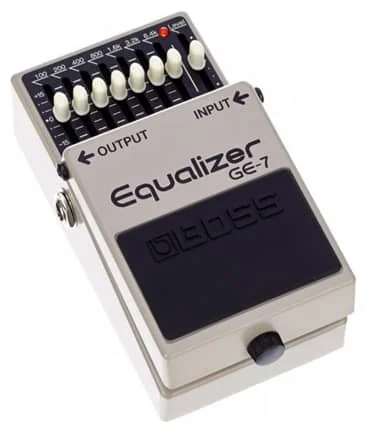
The compressor is an effect that is often used on acoustic instruments to control excessive volume peaks and enhance notes that sound too weak. Amplified acoustic instruments are too sensitive to the dynamics applied by the guitarist.
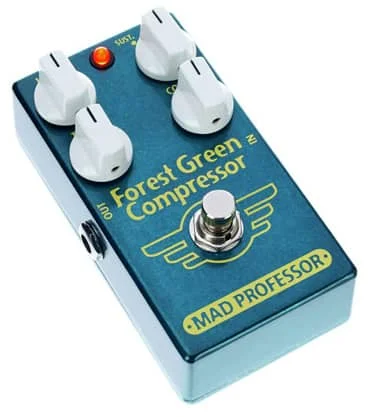
If we play the strings with varying intensity, for example by using different picking techniques on the same piece of music, such as subtle arpeggios and heavy strumming, this can create volume rises and falls that are too obvious or even annoying if we play the guitar too hard.
Well, this is where the compressor comes in to help us control this problem. Since this effect attenuates the volume peaks and enhances the notes that sound with less intensity. A certain dynamic range would be maintained, but suitably softened. In addition, the compressor provides more sustain to our acoustic instrument, something that is very good for us.
Acoustic Guitar Pedals: Reverb and Delay
Reverb is a time effect just like delay. However, the delay effect is an echo produced in an open space, and reverb is an echo generated in a closed space. As a result, reverb is a more compact and uniform effect, and therefore more discreet and natural than delay.
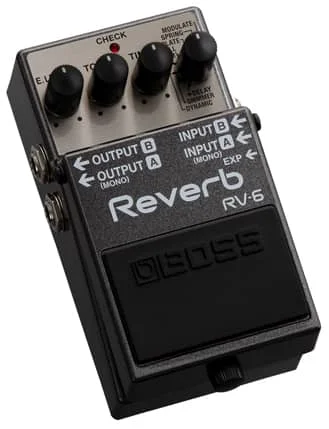
The most natural and widely used types of reverb on acoustic guitar are Room and Hall. Hall reverb mimics the long echo that would occur in a large concert hall, and is the most popular Reverb effect due to its versatility, depth, naturalness and grandeur. Everyone likes to sound like they are playing in a magnificent concert hall.
The Room reverb produces the echo of medium or small spaces. A very natural reverb, but with a faster decay, and a drier sound with less brightness than the Hall reverb.
The Delay copies our signal, and reproduces it a few moments later. Thus recreating the echo produced by shouting in the mountains.
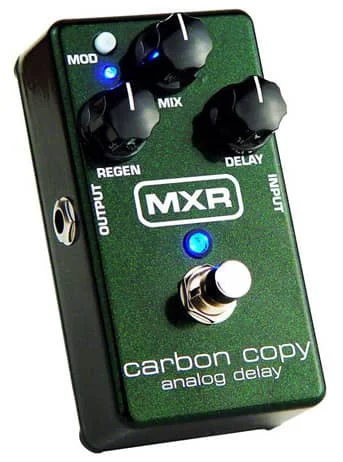
Acoustic Guitar Pedals: Chorus
In a choir of voices, the tuning between singers is never totally exact. In addition, there are very slight differences between the entrance and the exit of each note. Well, something very similar is what happens with this effect.
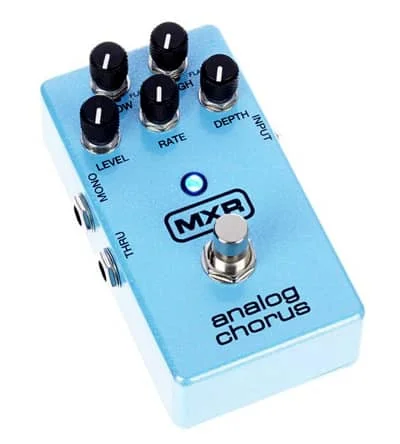
Its function would be to simulate the sensation that two or more instruments are trying to play the same thing at the same time. As a result, the signal is enriched, due to the sensation that several instruments or voices are playing in unison. The original signal would be mixed again with the same modulated signal, slightly delayed or out of sync. Consequently, the sound would stop being linear, becoming an oscillating or pulsating sound.
For this reason, it is normal for acoustic instruments to use it sparingly or in its most subtle configurations.
Pedal to make an electric guitar SOUND like an acoustic guitar
You may be wondering if there are pedals that make an electric guitar sound like an acoustic guitar. Well, there are, like the popular Boss AC-3 Acoustic Simulator.
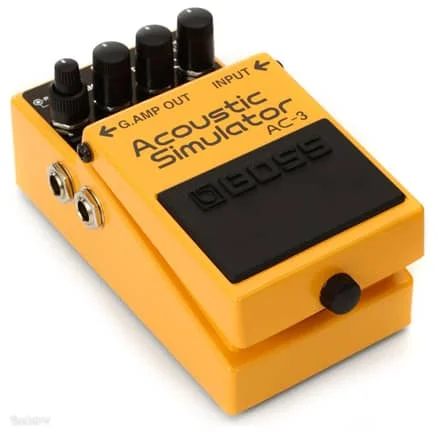
But making our electric guitar sound like an acoustic guitar will cost us 140 dollars.
